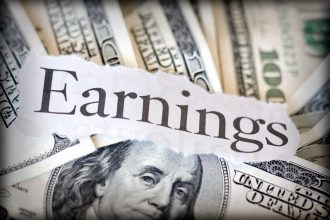Federal Reserve officials may have voted unanimously to hold the benchmark interest rate steady in June, but Chair Jerome Powell says he wouldn’t take future consecutive rate hikes off the table “at all.”
When asked during an appearance at the annual ECB Forum on Central Banking on Wednesday if the U.S. can expect an increase at every other meeting of the central bank, Powell said officials haven’t made a conscious decision to go that route. “That may work out that way, it may not work out that way—but I wouldn’t take moving consecutive meetings off the table at all,” he said.
In discussing the call to skip a rate hike in June, Powell said it was all about moderating the pace of decisions. “What we’re aiming for is a stance of policy that’s sufficiently restrictive to bring inflation down to 2% over time,” he said. “As you get closer to that, you get closer to the place where the risks become more in balance.”
Bringing inflation in line with the Fed’s 2% target is going to be a long process, Powell warned. “I don’t see us getting back to 2% this year or next year [on core inflation],” Powell said, adding that he sees the U.S. making steady progress on headline inflation, but that core inflation—which strips out food and energy costs—is slower. “I see us getting there the year after.”
That means 2025.
Given this forecast, it is unlikely that the Fed will be cutting interest rates any time soon. “We will be restrictive as long as we need to be,” Powell said. “If inflation is coming down sharply and we’re confident that it’s on a path to 2%, that would be a different situation—you would begin to think about loosening policy, but we’re a long way from that.”
One of the biggest points of agreement among the international central-bank leaders gathered Wednesday seemed to be that rate hikes are taking longer than expected to dampen inflation. Powell, along with Bank of England Governor Andrew Bailey and European Central Bank President Christine Lagarde, all indicated they were prepared to push through additional hikes.
Despite the significant moderation in inflation levels that Europe has seen so far, Lagarde dismissed the idea of pausing rate hikes, or even considering rate cuts at this stage. “This is not what we’re considering at the moment,” she said.
Lagarde and Bailey blamed fixed-rate mortgages for the delayed impact of the rate hikes by the U.K. and EU central banks during this monetary cycle. Both central bankers noted that there are many more fixed-rate mortgages in the EU now than 15 or 20 years ago, during the prior cycle of rate hikes.
“We know that the transmission of monetary policy is going to be slower as a result,” Bailey said, adding that because of these financing shifts, “history isn’t going to be a great guide” for how long it will take rate hikes to drive economic impact, given the shift from variable to more fixed-rate mortgages.
Japan’s economy, in contrast, is doing “fairly well,” Bank of Japan Governor Kazuo Ueda said, noting that the BoJ hasn’t raised rates yet because the underlying inflation is below 2%. He added that Japan has been “trapped” in a zero-inflation-expectations equilibrium for a long time. “Now we are seeing signs that inflation expectations are rising, but as I said, not to the extent that we are fully in the 2% inflation expectation,” he said.
Powell said Wednesday that he believes U.S. monetary policy is currently restrictive, saying it has been “surprising” that inflation has been this persistent. “But I think the bottom line is that policy hasn’t been restrictive enough for long enough,” Powell said.
Powell rejected the idea that the Fed is driven by the markets’ reactions in setting monetary policy or that he, in particular, wanted to see a weaker stock market and tighter financial conditions last year. The Fed isn’t focused on what markets’ expectations are, Powell reiterated.
“Honestly, we have different jobs. Our job is to bring inflation down to 2% and sustain maximum employment. That’s our job. That’s what we think about when we look at the data. And that’s what we care about. And markets react—different parts of the market react in different ways. It’s just not something that is a principal focus of our work.” Powell said.
Inflation in the price of goods in the U.S. has been coming down for the past six months, Powell pointed out, particularly driven by the easing of supply-chain issues and a shift in consumer spending toward services. “The place where we haven’t really seen much progress is in non-housing services,” Powell said. That category accounts for just over half of the inflation measure in the Fed’s preferred price growth gauge, the Personal Consumption Expenditures index.
Labor costs, Powell said, are really the “biggest factor by far” in the persistence of inflation in the service sector, adding that while there are signs that the labor market is softening, that is just beginning. “The point is…that’s where we’re not seeing a lot of progress yet,” he said.
There is some evidence that Powell’s approach is working. The Council for Economic Advisors published a apples-to-apples analysis of recent inflation rates across G-7 nations on Tuesday. By harmonizing data on headline inflation, the CEA found that while prices surged earlier in the U.S., rates on a 12-month basis are now running lower than in other G-7 countries.
The CEA’s research also found that the U.S. rates for both headline inflation and core inflation, which strips out the more volatile food and energy prices, are lower than in other G-7 countries.
Although Powell repeated Wednesday that the Fed has more work to do to get inflation down, the CEA’s new analysis is also good news for the Biden administration, which has continued to take political hits on the persistence of inflation and high levels of federal spending. Biden is set to launch a defense of his economic accomplishments with a speech this afternoon.
The U.S. government’s pandemic-related spending was “very high,” Powell acknowledged, but said Wednesday that stimulus money and consumer savings levels aren’t as much a factor in the current inflation trends as the strong labor market and wage growth. “If you look at where the inflation is in the economy, I wouldn’t say that that’s an important driver of inflation or something that we think about or consider,” he said
Powell noted, however, that the pandemic had changed the U.S. in ways that could affect economic policy in he future. “There are changes and we don’t know how persistent they will be,” Powell said.
Write to Megan Leonhardt at [email protected]
Read the full article here




